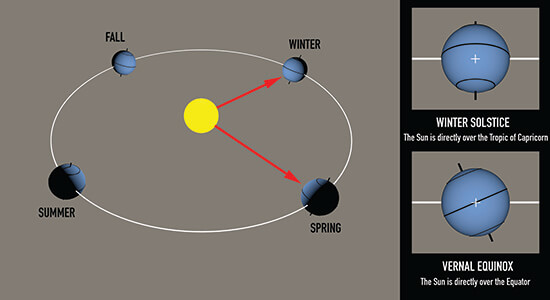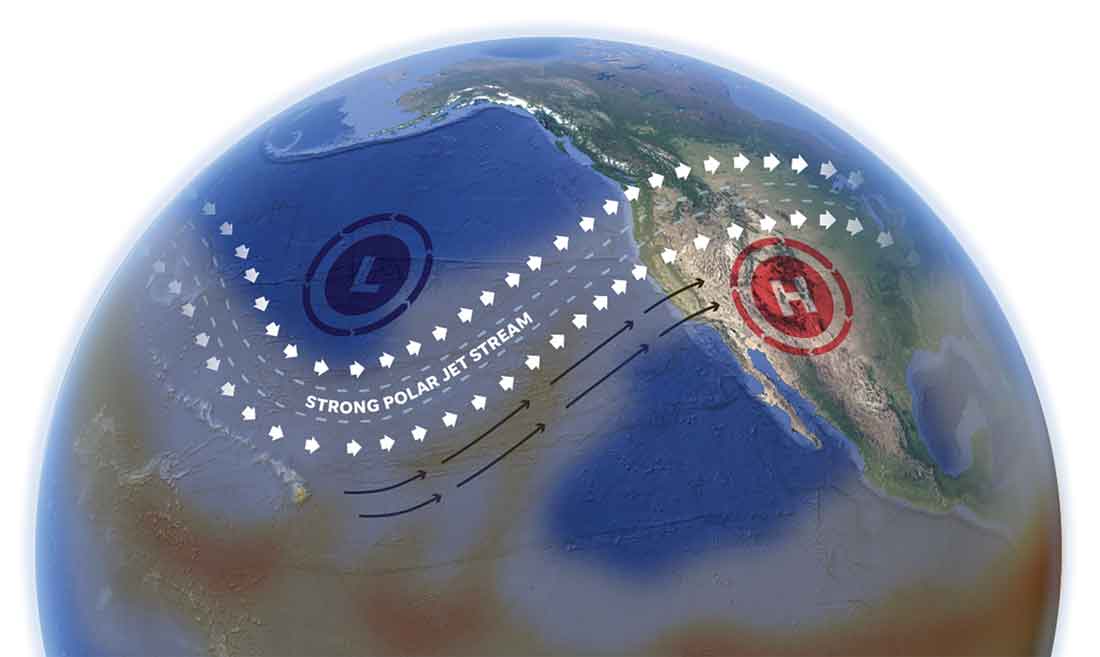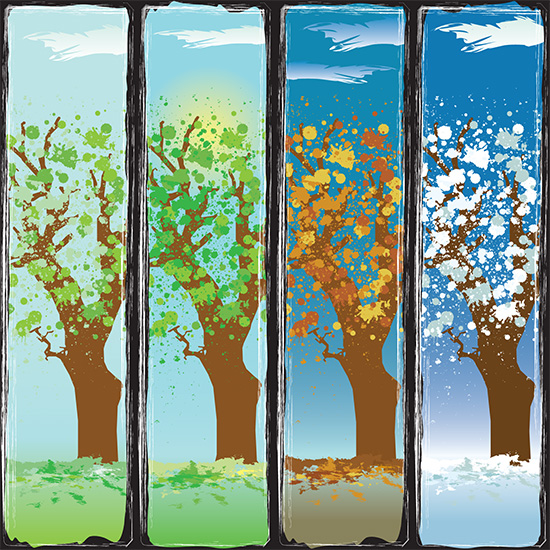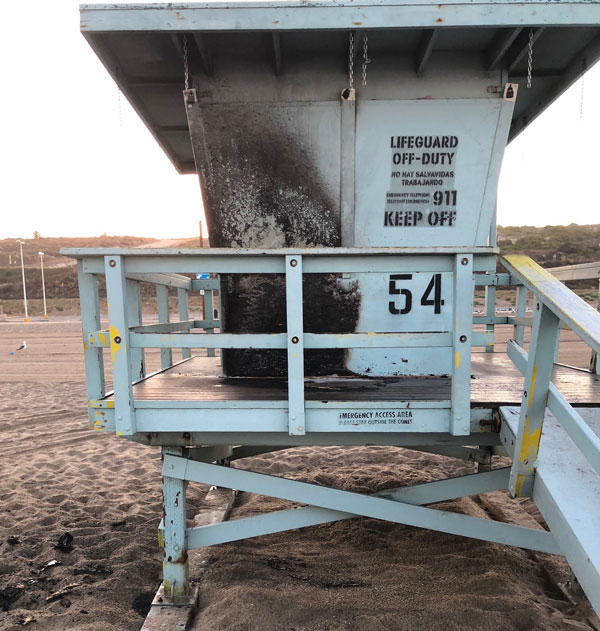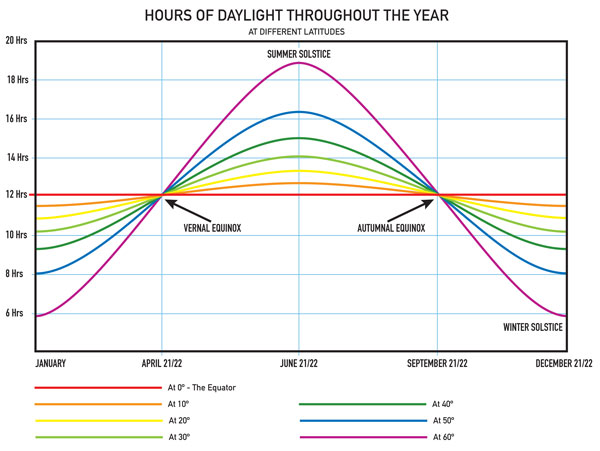The Vernal Equinox
“Spring is nature’s way of saying, ‘Let’s Party!’”
—Robin Williams
Once again, on March 21st the length of the days and nights balances out all over the world in that astronomical phenomenon we call an equinox. Halfway between the winter solstice and the summer solstice, we have arrived at the vernal equinox. Twice a year we experience this leveling of light and dark on our little blue planet, but why is that?
Being a visual person, I like to try and visualize the reasons behind such things. Seasons on Earth are directly attributable to the fact that our planet’s daily rotational axis is tilted to the plane of our orbit around the sun. This cockeyed spinning we do every day causes the northern half of our globe to point away from the Sun in December and toward the Sun in June. This means the Sun is over the Tropic of Capricorn on December 21st—or about 23.5 degrees south latitude. Likewise, the sun is directly over the Tropic of Cancer on June 21st—or about 23.5 degrees north latitude. Why 23.5 degrees? As you might have guessed: this is the tilt of our Earth’s axis relative to our path around the sun. Why Capricorn and Cancer you also may wonder? The sun is in the constellation of Capricorn in December and in the constellation of Cancer in June.
So, on the equinox, all things being equal, the sun is directly over the Earth’s equator and everybody on earth roughly shares 12 hours of day and 12 hours of night—halfway between winter and summer.
May this vernal equinox bring you all joy and equanimity in these bizarre times we are all experiencing. Hopefully with a little mindful caution, let’s all try and heed the late Mr. Williams gleeful observation and let us party!
CHART BY ERIC FITZGERALD This chart helps me to picture in my mind exactly what the solstices and equinoxes look like. The side insets are how the Earth looks from the point of view of the Sun. In the upper inset the north pole is pointed away from the sun on the winter solstice. In the lower inset the sun is directly over the equator and both the Arctic and Antarctic circles are in daylight on the spring, or vernal, equinox. The chart is not to scale.




